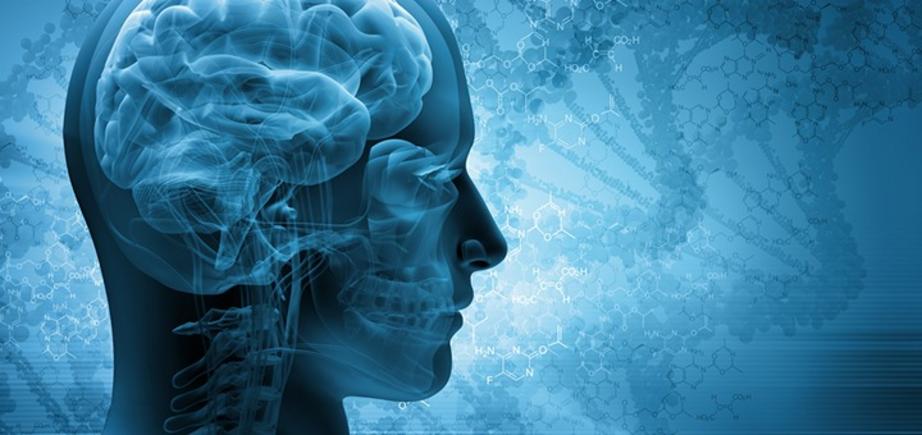What is anandamide?
Anandamide is a cannabinoid compound produced naturally by the body.
Summary
Anandamide is an endogenous cannabinoid that was discovered in the early 1990s. Research since then has shown that the molecule can impact mood, memory, pain, appetite, and plays a role in many more important biological functions such as cell regulation and reproduction.
You can increase levels of anandamide in the body by exercising, consuming chocolate, or using marijuana products that contain CBD.
Scientists have only scratched the surface when it comes to anandamide, and the endocannabinoid system in general. Many scientists are optimistic that endocannabinoids like anandamide will one day be targeted in future therapies.
Anandamide is a cannabinoid that is made by the body. The compound is named after the sanskrit word ananda, meaning bliss.
Anandamide has widespread effects on the body because it interacts with the endocannabinoid system. Anandamide plays a part in reward, mood, appetite, pain relief, and reproduction, among many other functions.
Here, we discuss the role of anandamide in the endocannabinoid system, its effects on the body, and how to increase your levels of anandamide.
The Endocannabinoid System

(Photo: Shutterstock)
Anandamide is a cannabinoid neurotransmitter that is part of the endocannabinoid system. This biological system is wide-reaching throughout the body and brain, and it is responsible for many different effects.
The endocannabinoid system is comprised of cannabinoids and their receptors. CB1 receptors are primarily found in the brain, while CB2 receptors tend to be found in the body.
Anandamide binds to CB1 and CB2 receptors, and is also known to modulate TRPV-1 receptors (vanilloid receptors).
There are two kinds of cannabinoids that can affect the body. The first group is known as the endocannabinoids. These are cannabinoids produced naturally within the body, and this group includes anandamide and 2-AG.
The second group is known as the phytocannabinoids. “Phyto” is the Greek root for plant, meaning these compounds come from plants such as marijuana. These include THC, CBD, CBN, and CBG, among others.
Within the endocannabinoid system, there are also enzymes which help break down cannabinoids. FAAH is the enzyme that breaks down anandamide. Interestingly, CBD inhibits this enzyme, causing levels of anandamide in the body to increase.
Endocannabinoids are interesting because they go against the typical flow of neurotransmitters. This kind of signalling is called retrograde transmission, and it is a signature of endocannabinoids, contributing to their unique effects in the body.
Anandamide and other endocannabinoids travel backwards and change the flow of other neurotransmitters. This explains why they are often described as modulators — they impact how other systems in the body and brain work.
History and Discovery

(Photo: Shutterstock)
The endocannabinoid system is still relatively poorly understood by the scientific community. In fact, the cannabinoids in marijuana were studied long before the endocannabinoid system was even discovered.
THC was first isolated in 1964 by Israeli scientist Raphael Mechoulam. However, the endocannabinoid system remained a mystery until the late 1980s, when Howlett and Devane discovered the CB1 receptor.
Soon after, in 1992, scientists discovered anandamide. It was the first endogenous cannabinoid to be discovered in the body. In 1995, scientists discovered another endocannabinoid called 2-AG.
Since then, other minor endocannabinoids have also been discovered, including virodhamine and noladin ether. Still, scientists have only begun to scratch the surface of this fascinating system.
Effects and Role in The Body

(Photo: Shutterstock)
Anandamide has many effects in the body, including a role in reproduction and fertility, appetite regulation, reward, cell regulation, memory, pain relief, and mood.
Because CB1 and CB2 receptors are so widespread, it is possible that anandamide has more effects on the body that have not yet been discovered. Future research may reveal more about this compound.
Pain Relief
Anandamide is one of the body’s natural pain-relieving compounds, and scientists believe that pain modulation is one of its primary functions.
In a 1999 study, researchers administered painful stimuli to rats while measuring levels of anandamide in their brains. They found that anandamide was released in response to pain.
Giving the rats additional synthetic anandamide reduced their response to pain, indicating that anandamide caused pain reduction.
A 1998 study found similar results. Anandamide was found to be an effective treatment for pain in mice.
More recent research has found that the analgesic effects of anandamide are related to the TRPV-1 receptors it modulates. Also known as vanilloid receptors, these pain receptors are the same ones responsible for the the pain you feel when eating a spicy pepper.
Appetite Regulation
Anandamide appears to play a part in appetite regulation. In particular, it may stimulate hunger and the desire to eat.
In a 1999 study, researchers injected anandamide into rats who had eaten their fill of food. After the injection, these rats ate significantly more food, despite being full before the injection. The researchers concluded that the anandamide injection led to overeating.
The study is taken as evidence that the endocannabinoid system, and anandamide, are involved in the “normal control of eating”.
Reward
When it comes to reward, many people think of the brain chemical dopamine. The reward pathway of the brain has many dopamine neurons.
The reward pathway also contains cannabinoid receptors and endocannabinoids, including anandamide. This has led researchers to hypothesize that anandamide plays a role in reward and pleasure.
A 2007 study found that injecting anandamide into the reward pathway of the rat brain caused rats to demonstrate increased liking of sweet foods.
The researchers concluded that anandamide signalling in the reward pathway amplifies the positive feelings associated with food reward.
Runner’s High
It’s no secret that exercising can boost your mood and cause a “runner’s high”. The runner’s high is described as a sudden burst of euphoria, analgesia, and mild sedation.
A 2015 study found that endocannabinoids, including anandamide, were “crucial” to the runner’s high.
This makes sense considering another group of endogenous drug-like chemicals, the endorphins, are already known to be involved in the runner’s high.
Memory
Research shows that anandamide may impair working memory. Working memory is the memory you hold in your mind at any given time, for example, the first half of this sentence.
A 1996 study found that mice treated with anandamide showed impaired performance on tests of working memory.
THC is known to have similar effects on working memory.
Mood
The endocannabinoid system is involved with the regulation of mood and emotion. Cannabinoid receptors are found in many areas of the brain related to these functions.
Anandamide is thought to reduce anxiety and depression. A 2014 study found that mice who were deficient in anandamide experienced more anxiety in response to stress, while those who had higher levels showed more resilience.
In a 2016 study, anandamide helped reverse symptoms of depression in diabetic mice.
Some scientists believe an endocannabinoid deficiency may underlie depression and anxiety.
Reproduction and Fertility
Anandamide plays a vital role in both male and female fertility and reproduction. Anandamide is thought to regulate hormones, sperm, and eggs in the human reproductive system.
A 2002 study found that anandamide was essential in the process of embryo implantation in mice.
A 2014 review concluded that anandamide may be useful as a biomarker, or indicator, of infertility. Normal anandamide function predicts normal fertility, while specific abnormalities in anandamide function predict infertility.
Cell Regulation and Development
During development, human embryonic stem cells differentiate into different kinds of cells, including brain cells, heart cells, and skin cells.
Anandamide is thought to play a role in the differentiation of brain cells into specific kinds of neurons during development.
Apoptosis, or programmed cell death, is a normal process that cells undergo when they are damaged so their parts can be recycled. This process can also take place when a cell is cancerous, therefore preventing the spread of cancer.
A 2000 study found that anandamide may help trigger cell death in cancerous cells. Human neuroblastoma and lymphoma cancer cells were more likely to die when more anandamide was present, and less likely to die when it was blocked.
How To Increase Anandamide

(Photo: Shutterstock)
Although anandamide is produced naturally by the body, it is possible to boost your levels in a few ways.
The first thing you can do to increase anandamide is exercise. The runner’s high is thought to be related to the action of anandamide. A 2012 study found that cardiovascular exercise increases levels of anandamide.
Another way to increase anandamide is to consume chocolate. Chocolate actually contains anandamide in small levels, which can affect the body when it is consumed.
Finally, using marijuana products that contain CBD can increase levels of anandamide in the body. This is because of the way CBD works.
CBD inhibits an enzyme called FAAH. FAAH breaks down anandamide soon after it is released. When FAAH is inhibited, anandamide sticks around for longer and continues to affect the body.
This explains why many of the effects of CBD overlap with the effects of anandamide.

